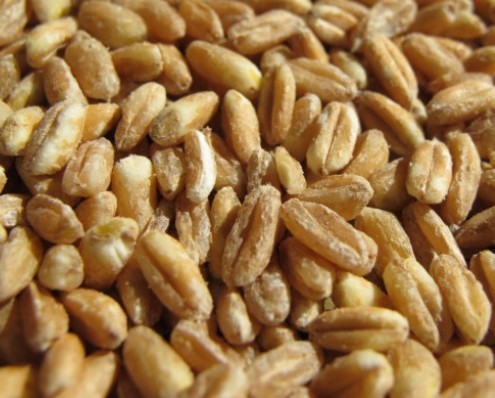Steen Hanssen goes all grainy on us, and sings the praises of Spelt, an ancient wheat variety in the midst of a comeback.
Text And Photos by Steen Hanssen

Dinkel or in English “spelt” is a golden brown colored, sweet and nutty flavored ancient grain of the wheat family, believed to have been first cultivated across central Europe around 3000 BC, where traces of Dinkel grain have been found at Neolithic settlements. Dinkel was a particular dominant crop in Eastern Europe up until the middle ages where it increasingly gave way to wheat.
Fortunately, over past few decades Dinkel has experienced somewhat of a revival (at least in Germany) caused by the organic movement and their focus on ancient organic grains, recipes and cultivation methods. Since returning to Berlin, I’ve noticed the use of spelt in various products ranging from oats, beer, coffee, Spätzle, Knödel, risotto, various bread rolls & baguettes and recently I even saw it being sold as pillow filling material at my local Winterfeldt market! I seriously contemplate experimenting with spelt flour for pizza and flammkuchen dough as well.
Some 800 years ago in the Palatinate Forest a Benedictine abbess, philosopher and proto-food blogger by 
the name Hildegard von Bingen spent consideralble time writing botanical and medicinal texts promoting nourishing foods and herbs. On Dinkle she wrote “Spelt is the best of crops… it will give you good blood and make you happy”. In Germany Hildegard von Bingen has become an icon of the organic (back to the roots) movement and her teachings about what constitutes healthy foods and beverages are still practiced today.
Besides promoting spelt, goat milk, fennel, chestnuts and other healthy foods, Hildegard von Bingen is also acknowledged for her work as a medieval music composer and author credited for writing the first account in human literature on the female orgasm. By all accounts a fascinating historical figure who continues to be relevant today.
Most of my Dinkel intake comes from enjoying Dinkel Hefe bier. A refreshing Obergärige (warm fermented) fruit and nut flavored yeast beer from Neumarkter Lammsbräu best enjoyed at room temperature or very slightly chilled.












natureslegacyforlife.com
You can find the best, of the best, Spelt (Dinkel) in the U.S.A.
Grains, flours, pastas, snacks etc.
517-448-2047 and tell em Fred told you to call.
Good Eating!!
Dear Tom,
We are Bulgarian producers of Spelt – please see our Web site, which up to now is only on Bulgarian language: http://www.limez.bg
We are producing Coarse-grained Spelt (Triticum Momococcum), which is with the following characteristics:
Gluten – up to 2 %
Proteins – 14,67g / 100g
fats – 2,97g/ 100g
Carbohydrates – 69,86g/ 100g
Spelt was grown in accordance with all requirements for organic products without chemicals, artificial stimulants and preparations!
Best regards,
Georgi Zlatanov
+359 898 450 473
[email protected]
Skype: georgi_zlatanov1
Where may I find whole grain spelt to buy in large quantities? Many thanks.
Ciao! In Italy, the emmer wheat that you call dinkel, we call farro. it’s one of those grains that you don’t want to tell people how healthy it is because they’ll be afraid it doesn’t taste good.
In our house, we make farro salad all summer long, in the winter, it’s farro stew with porcini mushrooms.
And if you need any farro flour…let me know, I’ll be happy to enable your pizza crust experiment.